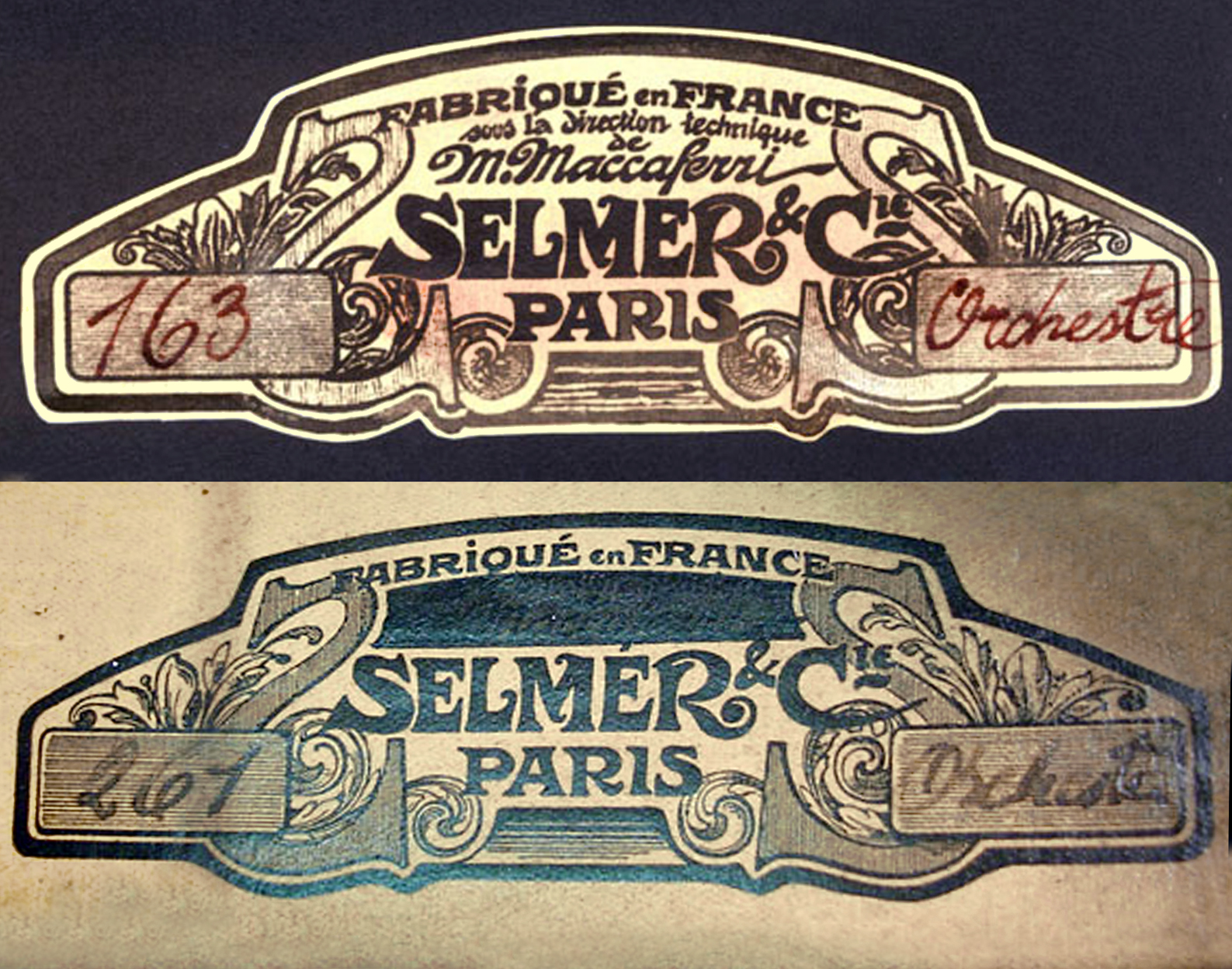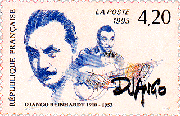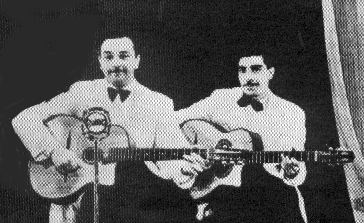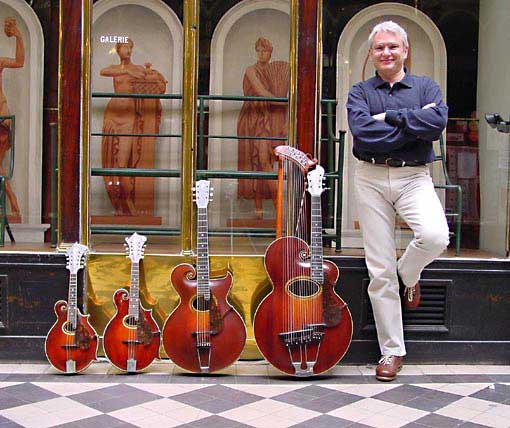 Background information An introduction (start here) Is it a Maccaferri? Or is it a Selmer? The Internal Resonator About Mario Maccaferri in English in French Selmer Primer About François Charle The Selmer Maccaferri book Manouche-Tone Strings
the
rest of the site Email:
click
here |
Many people outside France are a bit bewildered about what is a "Maccaferri" and/or a "Selmer" guitar. Since this confusion has existed for so long, the terms (in the English-speaking world, anyway) are probably permanently jumbled. Nonetheless, here are a few basic facts that may help clarify the situation. For
starters, Maccaferri was never originally a brand
name. In the twenties and thirties, Mario Maccaferri
was a classical guitarist of considerable renown, a
contemporary of Segovia back when classical guitarists
were a bolder, rarer and rather less-defined breed
than they are today. He had also studied lutherie and
indeed became a master luthier. From his own musical
experience and his formidable lutherie background in
Italy, he synthesized a vision of a new guitar. His influence on twentieth century guitar can probably not be fully understood independently from that of his mentor in Italy, Luigi Mozzani. Suffice to say for now, Maccaferri only became a "brand name" after he emigrated to the US. In Europe before the War he was a luthier-visionary, and the designer of a group of particular guitars with noteworthy innovations, such as his internal resonator, sealed tuning machines, and a metal-reinforced neck, among others.
Second of all, we have the venerable firm of Selmer & Cie in Paris. Maccaferri allies at the London Selmer dealership convinced Selmer to stake him to a lutherie atelier which would produce guitars built to his specifications, to be sold through Selmer dealers. One can only imagine the charisma and persuasiveness they must have employed to inspire, especially during the Depression, such a complete departure from Selmer's usual enterprise: wind instruments like clarinets and saxophones. Maccaferri designed a cluster of guitars which Selmer built and marketed for only two years: 1932 and 1933. By 1934, he had parted company with Selmer, whereupon someone in the Selmer shop redesigned their main production guitar and, thereafter, Selmer basically sold only that one model. Maccaferri's era of influence at Selmer preceded Django Reinhardt and the Hot Club jazz phenomenon. Being first and foremost a classical musician, Maccaferri never knew Reinhardt, nor even knew his music. Commencing in 1932, Maccaferri hired workers (mostly Italians, by the way), oversaw the outfitting of the workshops and the making of jigs and molds, established specifications for the initial models, and generally got things rolling while continuing his career as a concertizing classical guitarist (though this was soon to be cut short by a freak accident). Following
his departure, his name and the patent numbers for his
resonator had been eliminated from the headstock
engraving and his "credit" was literally inked out on
the internal label. 
His last Selmer guitar, by the way, #503 (below), was made in 1940, and he played this one exclusively for the rest of his life. Upon his death, his widow donated it to the museum of the Conservatoire Nationale in Paris, now part of the Cité de la Musique, where it is proudly displayed alongside Stéphane Grappelli's violin. The D-hole model was never made again. In fact, only the new modèle Jazz was produced at all, though a handful of old bodies and parts were combined and sent out in later years. By l939, Selmer had added Django's name to the headstock, though only a few rare guitars actually bear this inscription.
The important thing about Mario Maccaferri is that, while his involvement with Selmer was brief and though the flagship Selmer model was perfected by someone else after he left, Mr. Maccaferri made it happen in the first place.
|
|
If you want the full story, read François
Charle's
book.
Working plans for a Selmer, anyone? Click here. To find out more about François Charle, visit: www.rfcharle.com Do you own a Selmer guitar? François Charle is archiving a complete database on Selmer guitars and has over 500 in his list already. Please contact him about it, if you haven't already. All references kept strictly confidential. Drop me a line
click
here This page © 2002 - 2018 Paul Hostetter. All rights reserved. |



 François Charle, the noted luthier,
collector and dealer in Paris, wrote and published
the definitive book on Selmer and Maccaferri
guitars. Work on this labor of love began in earnest
a decade before it finally appeared in print in
1999. In the process of preparing this work, he
documented hundreds of the surviving Selmer guitars,
traveling all over Europe to do interviews and take
photos. In this effort, he enjoyed the support and
cooperation of myriad other collectors, experts, and
musicians around the world. The book was released in
1999. Both its French and English
hardback editions sold out quickly, but it remains
available in paperback.
François Charle, the noted luthier,
collector and dealer in Paris, wrote and published
the definitive book on Selmer and Maccaferri
guitars. Work on this labor of love began in earnest
a decade before it finally appeared in print in
1999. In the process of preparing this work, he
documented hundreds of the surviving Selmer guitars,
traveling all over Europe to do interviews and take
photos. In this effort, he enjoyed the support and
cooperation of myriad other collectors, experts, and
musicians around the world. The book was released in
1999. Both its French and English
hardback editions sold out quickly, but it remains
available in paperback.